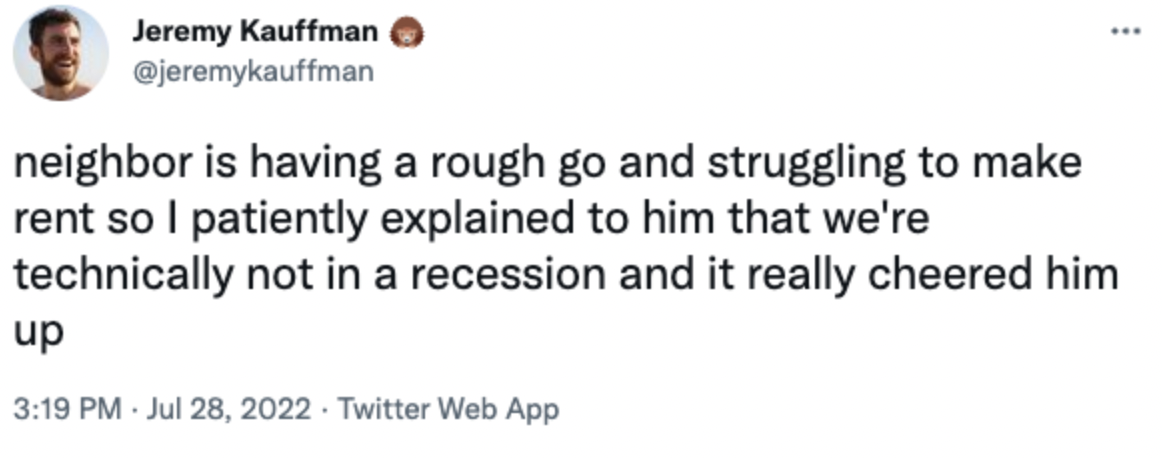Doom and Gloom ahead, and privacy tips for your phone number!
Global Gloom and Doom Ahead
The International Monetary Fund (IMF) has released their annual updated World Economic Outlook and have pulled no punches with their forecast, which they say is “Gloomy and More Uncertain”. They have lowered their baseline forecast for economic growth from 6.1% in 2021 to 3.2% for 2022 and further expect growth to decrease to 2.9% in 2023.
Economic Counsellor and the Director of Research of the IMF, Pierre-Olivier Gourinchas, stated in the official IMF blog that the continuing war in Ukraine, higher-than-expected inflation in the US and major European nations, and longer-than-anticipated slowdowns in China due to COVID-19, are the major factors in the bleak forecast. He made a list of possible eventualities that could occur within the next year:
The war in Ukraine could lead to a sudden stop of European gas flows from Russia
Inflation could remain stubbornly high if labor markets remain overly tight or inflation expectations de-anchor, or disinflation proves more costly than expected
Tighter global financial conditions could induce a surge in debt distress in emerging market and developing economies
Renewed COVID-19 outbreaks and lockdowns might further suppress China’s growth
Rising food and energy prices could cause widespread food insecurity and social unrest
Geopolitical fragmentation might impede global trade and cooperation
The IMF stated in their report that “taming inflation should be the first priority for policymakers.” They point out that any actions taken at this point are going to hurt, and any tightening of metaphorical purse strings is going to be extremely difficult due to budgets already stretched thin due to pandemic expenditures. They also cite that any new policies will have to be offset by higher taxes.
Whether overt taxes, or the hidden tax of inflation, individuals continue to lose access to their money.
Meanwhile as this IMF report was released, Bitcoin’s price increased to 24K. The official economy worsens.
Interest Hikes Up Again
The Federal Reserve has hiked interest rates by another 75 basis points, raising the number to the 2.25% - 2.50% range - the biggest rate hike since last month.
When asked about whether or not the US is in or heading towards a recession, Federal Reserve Chair Jerome Powell said:
"I do not think the U.S. is currently in a recession. … It doesn't make sense that the U.S. would be in recession."
That’s such a relief to hear! I’m sure many of us were worried for a moment.
As real-world evidence continues to suggest many people are really hurting right now, Powell maintains that the current US unemployment rate (3.6%, an almost 50 year low), along with other data, suggest wages are increasing and more jobs are being created. Reuters summarized his remarks:
“Fed officials are ‘acutely aware’ of the hardship that inflation imposes on American households, particularly for those with limited means, Powell said, and they will not relent in their effort until presented with ‘compelling evidence’ that inflation is coming down.”
Meanwhile, the value proposition of a currency that can’t be systematically debased by design is stronger than ever.
Privacy Corner:
Take Control of Your Phone Number
Our cell number is tied to everything we do because we hand it out to everyone: To the doctor’s office, to our social media accounts, to merchants and rewards programs. Most of us have had the same cell phone numbers for many years, if not our whole life, and it is a unique identifier for all of us that allows our activities to be correlated.
The information we tie to our phone numbers is harvested by data brokers, and sold to countless other parties. But there are things you can do to cut off this trail of digital exhaust. Below is just one strategy, but find something that works for you!
Step 1: Lock Down Your Existing Number
You’ll want to stop using your existing number, and move your contacts to new communications methods. But you don’t want to just get rid of this number you’ve had forever, because people might still try to contact you there. Keeping the number active with your cell provider is expensive, whereas porting it to a VoIP provider is very cheap and allows you to still receive communications from that number.
Terms to Know: Voice Over Internet Protocol (VoIP) numbers use the internet to operate instead of cell towers, and they act just like your normal cell phone number.
You can port your existing number to many different services, including MySudo, Twilio, Telnyx, and others. The cheapest and most convenient is probably to port it to Google Voice — Google Voice is TERRIBLE for privacy, but GREAT for security. The plan is to stop using this number anyway, so the privacy concern isn’t an issue. The increased security is very important though, especially if your number is well known and might be in danger of a SIM swap or number porting attack. Porting your number to Google will allow you to secure your account with strong 2FA like a security key, and prevent such number-porting attacks.
To port to Google Voice, it’s a one-time fee of $20, and then you will receive communications from that number forever after at no additional cost!
Once you port your number, it will become a receiving-number only. Have your calls forwarded directly to voicemail, and a transcription will be automatically emailed to you. Any messages sent to this number going forward will also be emailed to you. Whenever you receive communications going forward, you can choose which new communication method you want to respond using (if you want to respond at all).
Step 2: Buy a New SIM
You can get a prepaid SIM at a ton of different places. Privacy expert, Michael Bazzel, recommends a prepaid Mint Mobile SIM because it’s super easy to set up, requires no personally identifiable information, and is cheap.
You’re not going to use this cell number to make calls, and you won’t ever give it to anyone — you’re just using the SIM for data.
Step 3: Get Multiple VoIP Numbers.
Create an account with a VoIP provider of your choice, and set up multiple VoIP numbers. Each number you create will be used for a distinct purpose — This way, online merchants never know which number you use for banking, or for friends and family, for example.
There are many VoIP providers you can use. We recommend MySudo because it’s the simplest to set up. For $1 a month you get 1 new number, and for $15 a month you get up to 9 new numbers, with unlimited messages and calls. You set up your numbers inside the MySudo app. For each number, you’ll create a separate profile, knows as a “Sudo” (as in pseudonymous identity). You label the Sudo according to the number’s use case (eg “shopping”, “friends and family”, “work”) so that it’s very clear which number you’re using at any given time. This helps to silo your activities so that they can’t all be correlated with each other. This also gives you more control over incoming calls: you can identify who a caller might be more easily, and you can also choose to turn off notifications for certain numbers (eg you can turn off notifications for your shopping number, if you only ever get spam callers there).
Now you have a cleaner digital life, where you’re not using the same single identifier for every activity!
For a more detailed tutorial check out our recent video on NBTV!
By Will Sandoval, NBTV Associate Producer, and Naomi Brockwell.



